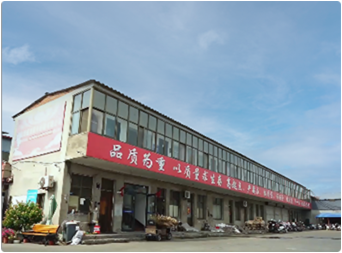ag. . 11, 2024 22:34 Back to list
Exploring the Benefits and Applications of Internal Threaded Bars in Structural Engineering and Design
Understanding Internal Threaded Bars Applications and Benefits
Internal threaded bars are a versatile component widely used in various industries, from construction to machinery manufacturing. These unique fasteners feature internal threads along their length, allowing other components with matching external threads to be securely attached. This innovative design offers several advantages that make them an ideal choice for an array of applications.
What are Internal Threaded Bars?
Internal threaded bars are typically made from materials such as steel, stainless steel, or other alloys, depending on their intended use. The internal threading can be designed to different specifications, accommodating a range of external bolts, screws, or other fittings. The bars can vary in length, diameter, and thread pitch, making them adaptable for various applications.
Key Advantages
1. Enhanced Stability and Strength One of the primary benefits of using internal threaded bars is their inherent strength. The internal threads provide a robust gripping surface that can withstand significant tension and pressure, making them ideal for structural applications. When properly installed, they can offer superior stability compared to traditional fastening methods.
2. Ease of Assembly Internal threaded bars simplify the assembly process. Their design allows for quick and easy installation of components without the need for additional fittings. This efficiency is particularly advantageous in large-scale construction projects where time and labor costs are critical factors.
3. Flexibility in Design The versatility of internal threaded bars means they can be utilized in a wide range of designs. From machinery and automotive parts to furniture and construction frameworks, these bars can be customized to meet specific requirements. This adaptability makes them a popular choice among engineers and designers.
internal threaded bar

4. Reusability Unlike many other fastening solutions, internal threaded bars can often be reused multiple times without compromising their integrity. This feature not only helps in reducing waste but also in saving costs over the life of the product.
5. Resistance to Environmental Factors Many internal threaded bars are manufactured from corrosion-resistant materials, making them suitable for use in harsh environments. This durability ensures that they can maintain their performance in applications exposed to moisture, chemicals, and varying temperatures.
Common Applications
Internal threaded bars find applications in numerous fields. In construction, they are commonly used in structural steel frameworks, providing a secure connection that is essential for stability. In the automotive industry, these bars are found in suspension systems and engine components, where reliability and strength are critical. Additionally, they are used in furniture assembly, offering a sleek look while maintaining functionality.
Innovative applications are continually emerging as designers and engineers explore new ways to utilize this versatile fastening solution. For instance, internal threaded bars are being integrated into custom machinery designs, allowing for more compact layouts without sacrificing strength.
Conclusion
In summary, internal threaded bars are an essential component in modern engineering and construction. Their unique design provides stability, ease of assembly, and flexibility that is unmatched by many other fastening solutions. As industries continue to evolve and demand more efficient and reliable components, the role of internal threaded bars will undoubtedly become even more significant.
-
The Ubiquitous Reach of DIN934 in Application Realms
NewsMay.16,2025
-
Exploring Different Bolt Types
NewsMay.16,2025
-
Cracking the Code of Sleeve Anchor Mastery
NewsMay.16,2025
-
Clamp Design Principles,Types and Innovations
NewsMay.16,2025
-
Artistry Inspired by the Humble Anchor Bolt
NewsMay.16,2025
-
A Deep Dive into Screw Types
NewsMay.16,2025


